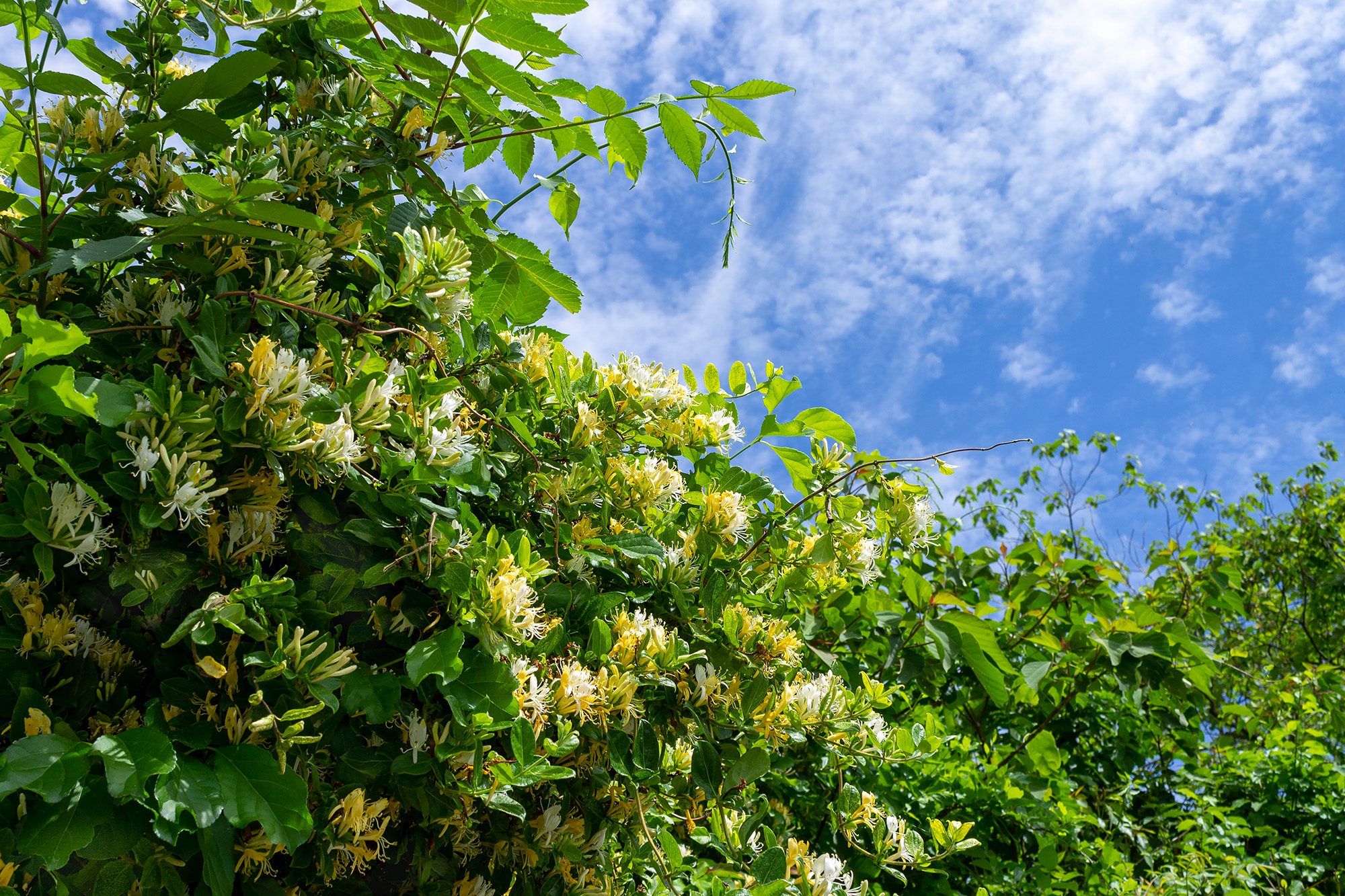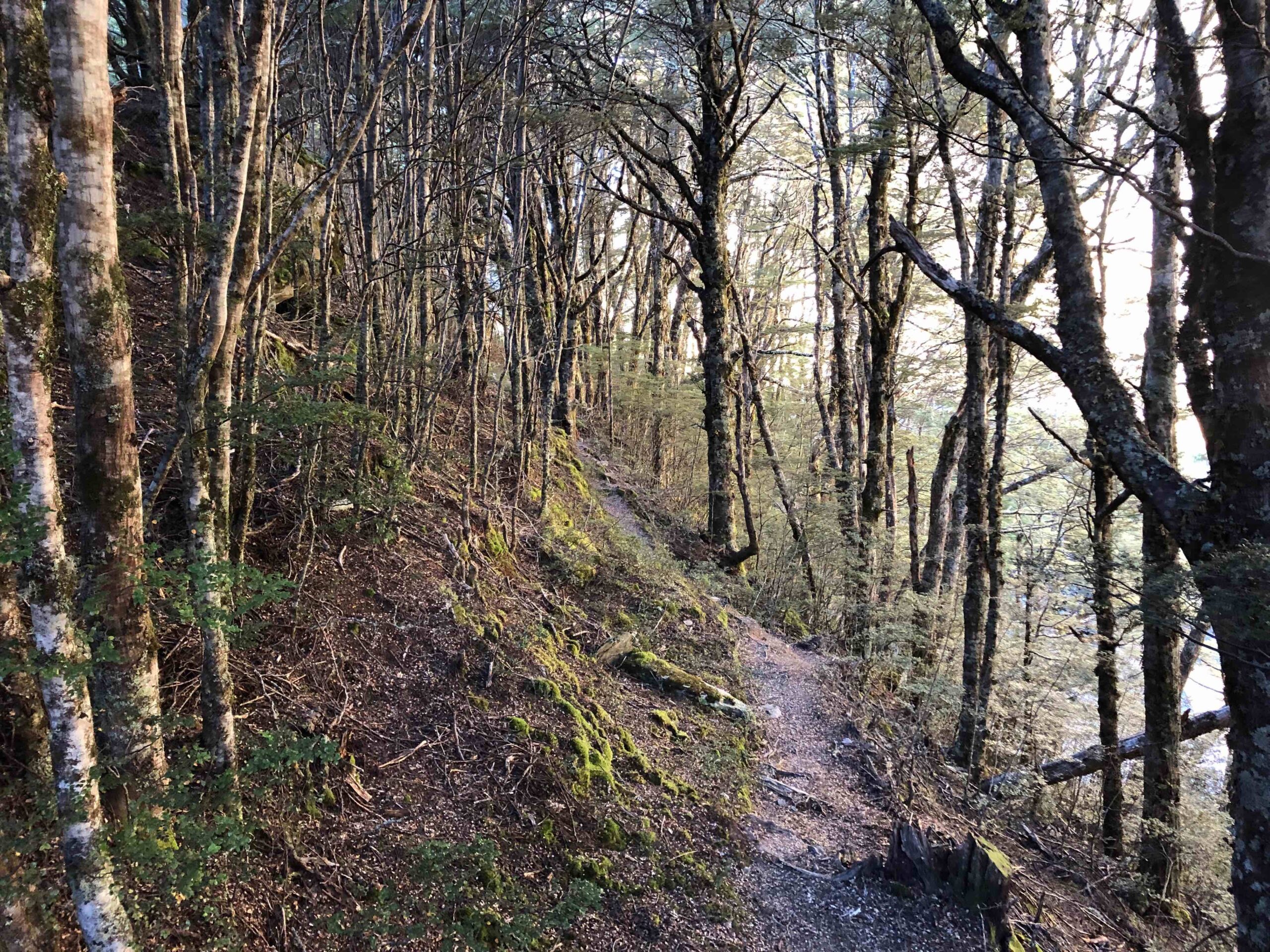At the house where I grew up, we had Japanese Honeysuckle growing wild all around. My brother and I loved it and would pull the flowers off and suck out the sweet nectar. The flowers have a lovely scent and we’d often pick handfuls and put them in vases inside. Only later as it took over more and more of the garden, did we realise it was an invasive weed.
New Zealand is known around the world for its breathtaking landscapes and unique biodiversity. You only have to take a walk through our native bush to appreciate how special it is. There are a number of threats to our beautiful environment here though, including the invasion of pest plants – many of them originating from overseas. Often these pest plants can be found in our own backyards and gardens as well. Using natural eradication methods, such as pulling by hand, pruning, mulching, and introducing natural predators, we can play a crucial role in protecting the native flora and fauna.
Here’s a list of common pest plants in New Zealand and how best to eradicate them naturally:

Climbing Asparagus (Asparagus scandens)
Originally introduced as an ornamental plant, climbing asparagus has become a prevalent invader in New Zealand’s forests and gardens. Recognized by its feathery foliage and sharp spines, this plant displaces native vegetation and disrupts delicate ecosystems.
Natural eradication method
Pulling out by hand – Regularly inspect your garden and manually remove climbing asparagus shoots, making sure to pull out the entire root system. Don’t dispose of in compost as this sneaky plant will take root. Dispose of roots and stems in the rubbish or burn.
Mulching – Suppress the growth of climbing asparagus by applying a thick layer of organic mulch around affected areas. This not only hinders its growth but also improves overall soil health for that area.

Woolly Nightshade (Solanum mauritianum)
Native to South America, woolly nightshade is characterised by its distinctive woolly leaves and purple flowers. This pest plant poses a threat to native vegetation and competes for essential resources.
Natural eradication method
Pruning – Regularly prune woolly nightshade to limit its growth and prevent the production of seeds. Dispose of pruned material responsibly to avoid accidental spread.
Companion Planting – Introduce companion plants like yarrow or tansy, which can act as natural repellents for woolly nightshade, discouraging its growth.

Moth Plant (Araujia Hortorum)
Also known as “cruel plant,” moth plant is a vigorous climber with heart-shaped leaves and distinctive pods. Originally introduced as an ornamental plant, it has invaded native ecosystems, smothering and preventing the establishment of native plants. Butterflies feeding on moth plants can die from starvation due to their feeding parts becoming gummed up. The sap is also poisonous and can be a skin irritant.
Natural eradication methods
Manual Removal – Remove moth plants manually, but wear gloves to protect yourself from the toxic sap. Dispose of the plants carefully to prevent the spread of seeds.

Old Man’s Beard (Clematis vitalba)
Old Man’s Beard is a rampant climber with distinctive white, fluffy seeds. It poses a threat to native trees and shrubs by smothering them.
Natural Eradication Methods
Cut and Remove – Prune old man’s beard during the winter months when it is less active. Cut the vines close to the ground and remove the plant material to prevent re-establishment.
Vinegar Solution – Apply a solution of vinegar and water to the cut stumps to inhibit regrowth.

Japanese Honeysuckle (Lonicera japonica)
With its fragrant white and yellow flowers, is a fast-spreading invasive plant that outcompetes native vegetation for sunlight and nutrients.
Natural Eradication Methods
Smothering – Cover the affected area with a thick layer of mulch or cardboard to smother it, depriving it of sunlight and preventing regrowth.
Manual removal – Dig out small sites (all year round). Dispose of roots and stems in the rubbish or burn.

Wild Ginger (Hedychium gardnerianum)
Prized for its aromatic roots, wild ginger forms dense thickets that inhibit the growth of native plants.
Natural Eradication Methods
Digging and Removal – Dig up wild ginger rhizomes, ensuring that you remove the entire root system. Regular monitoring and removal are crucial to prevent regrowth.
Natural Herbicides – Utilise natural herbicides like vinegar or boiling water to control wild ginger. These alternatives are less harmful to the environment compared to synthetic chemicals.







